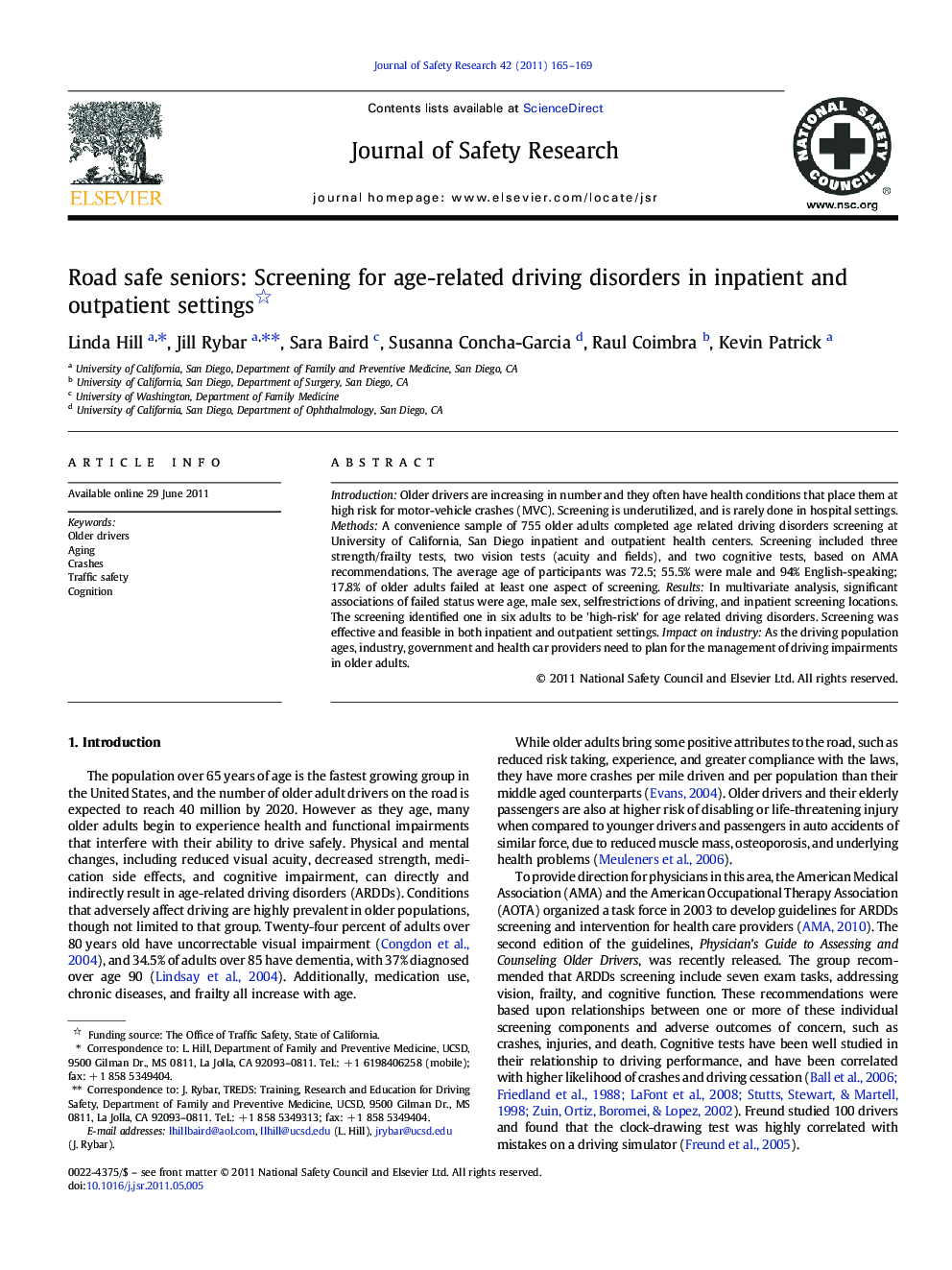| Article ID | Journal | Published Year | Pages | File Type |
|---|---|---|---|---|
| 587489 | Journal of Safety Research | 2011 | 5 Pages |
IntroductionOlder drivers are increasing in number and they often have health conditions that place them at high risk for motor-vehicle crashes (MVC). Screening is underutilized, and is rarely done in hospital settings.MethodsA convenience sample of 755 older adults completed age related driving disorders screening at University of California, San Diego inpatient and outpatient health centers. Screening included three strength/frailty tests, two vision tests (acuity and fields), and two cognitive tests, based on AMA recommendations. The average age of participants was 72.5; 55.5% were male and 94% English-speaking; 17.8% of older adults failed at least one aspect of screening.ResultsIn multivariate analysis, significant associations of failed status were age, male sex, selfrestrictions of driving, and inpatient screening locations. The screening identified one in six adults to be 'high-risk' for age related driving disorders. Screening was effective and feasible in both inpatient and outpatient settings.Impact on industryAs the driving population ages, industry, government and health car providers need to plan for the management of driving impairments in older adults.
Research highlights► In this study, we screened 755 persons for age-related driving disorders. ► Screening addressed medical history, vision, cognitive impairment and frailty. ► Nearly 1 in 5 individuals in inpatient settings failed at least one of the 7 screening tests. ► ‘Fail’ predictions included age, self-imposed driving restrictions, and polypharmacy. ► Screening took 15 minutes by ancillary office staff, and was well received.
